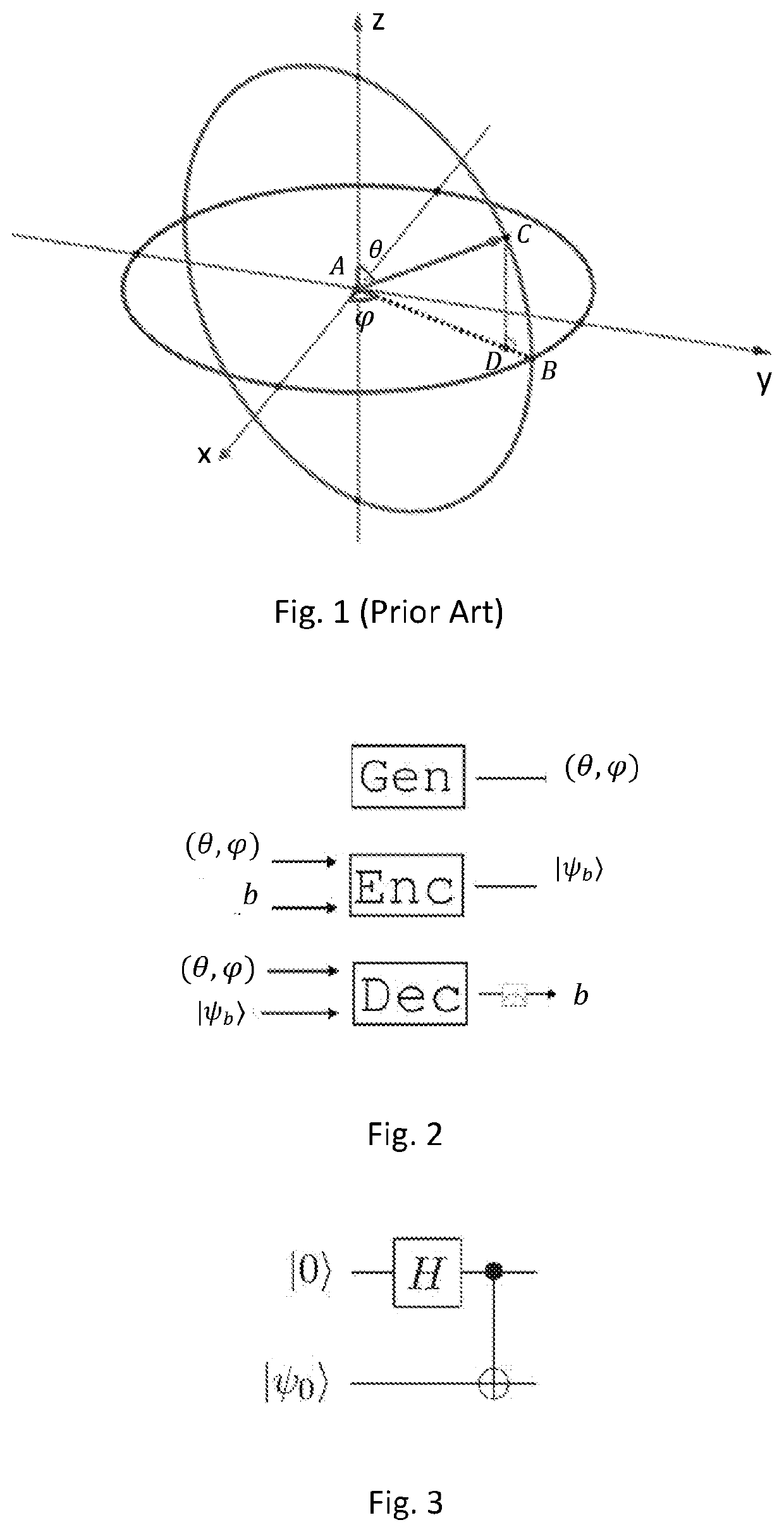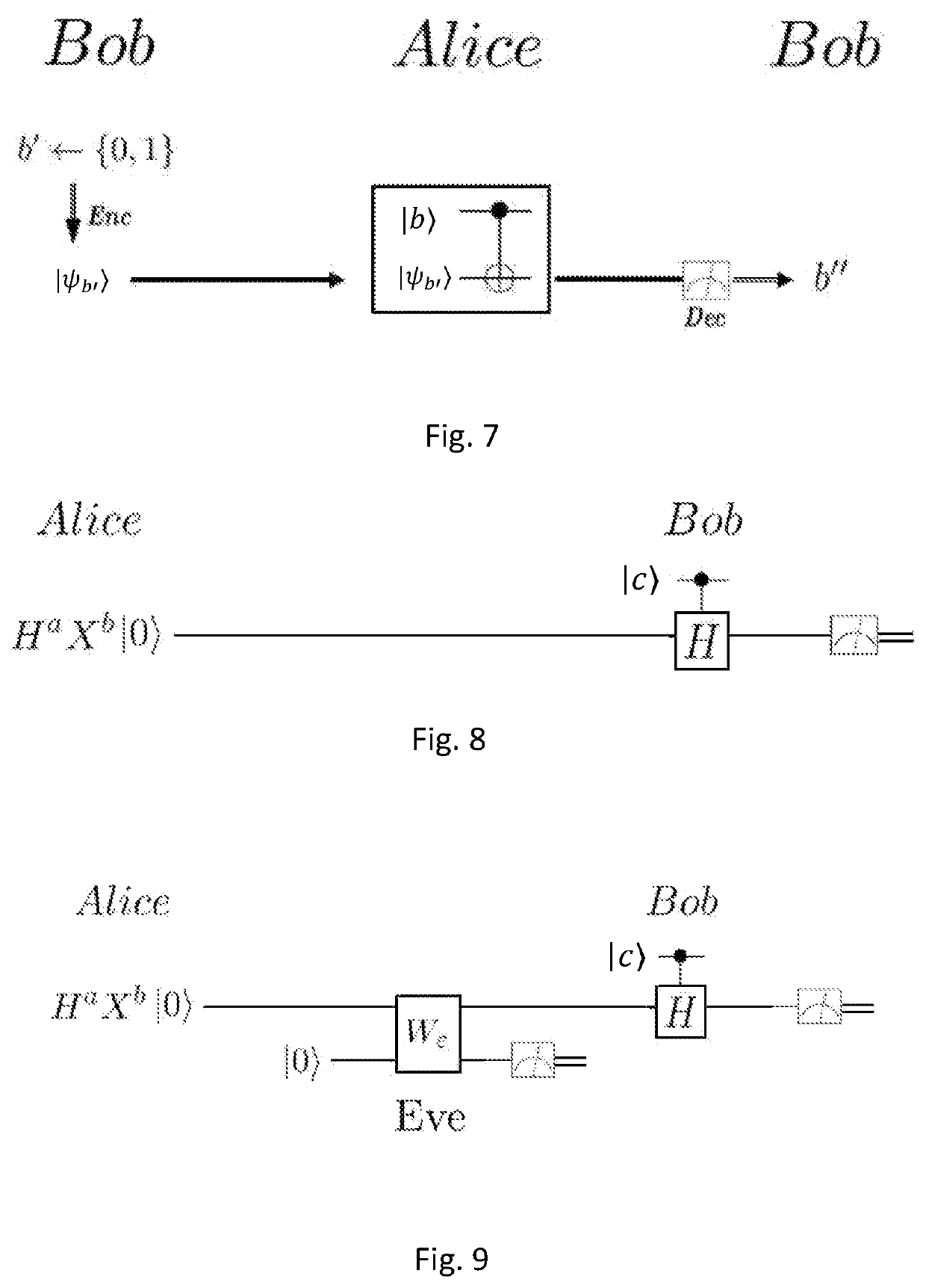However, according to the postulates of
quantum mechanics, no matter what form of realization is chosen, given a physical realization of an arbitrary qubit, ψ, one cannot determine its coordinates.
The inability to determine the coordinates of an arbitrary qubit is not an issue of insufficient measuring devices, but a consequence of the fundamental laws of
quantum mechanics.
Measurements of systems of 1 qubits are performed in reference to orthonormal bases of ⊕l, and result in a collapse of the
system into one of the elements of that basis.
Delegation of computation, while preserving the
confidentiality of the data (and sometimes even the program), is a challenging practical task that has kept researches busy ever since it was brought up in 1978 by Rivest, Adelman, and Dertouzos [“On data banks and privacy homomorphisms”, 1978].
The security of computationally secure schemes is based on (a) unproven assumptions regarding the computational
hardness of specific mathematical problems, and (b) the assumption that the computing power of the
adversary is insufficient for solving instances of these assumed-to-be-hard mathematical problems.
Typically, In such schemes, k′ is dependent on ƒ, and decryption of the evaluated
ciphertext requires the user to modify her keys according to ƒ. Such schemes cannot achieve full compactness.
Quantum computers threaten the security of computationally secure schemes, allowing, if built in scale, feasible solutions to problems which are currently considered impractical to solve.
These two problems are considered computationally hard, and stand in the basis of many commonly used cryptographic systems.
In 2014, it was shown in [YPDF14] that it is impossible to construct an efficient information-theoretically secure quantum
homomorphic encryption scheme.
However, their scheme falls short of achieving the properties listed above.
First, their scheme employs a computationally-secure FHE protocol, which makes their scheme only computationally secure (while IT-secure schemes are required).
Second, their scheme requires quantum and classical interaction between the user and the
server for the
processing of non-Clifford gates (while the scope of this work is constructing non-interactive schemes).
Third, their scheme is not fully compact, as it requires the user to update the keys used to encrypt the data throughout the computation.
The first has a decryption procedure whose time-complexity scales with the square of the number of T-gates (and hence falls short of achieving full compactness).
Their scheme is compact, but not fully compact, since decryption requires the user to apply classical changes to the keys according to f. Furthermore, it is only computationally secure.
Their scheme falls short of achieving the requirement of perfect
correctness as it has positive error probability.
However, all these schemes have computational security (and not IT-security) and fail to fulfill the requirements.
However, this method alone provides no means for constructing a QHE scheme that withstands our requirements.
This requirement results in decryption complexity linear in the size of the circuit, and hence, the scheme is not fully-compact.
In their work, the user is assumed to have capabilities significantly inferior to those of the
server.
They also suggest algorithms which enable the
server to help the user in performing a universal set of quantum gates over encrypted data, but these algorithms are neither compact nor non-interactive—they require the user to perform at least as many operations as the server for each gate, and some of them require rounds of
client-server interaction.
However, in their scheme, the same key is used for encoding each of the input qubits, and hence, their scheme withstands no standard cryptographic criterion of security.
However, they achieve no standard criterion of IT-security, as they only bound the amount of information accessible to an
adversary.
Furthermore, their scheme is neither perfectly correct nor fully compact.
It suggests a tradeoff between the size of the encoding and the success probability, where achieving constant success probability costs in increasing the size of the encoding exponentially with the total number of T gates.
However, their scheme suggests no solution to the main problem discussed in this paper, as their
evaluation algorithm is dependent on the key.
Given the key, the server may decrypt and read the message, which by no means provides the user with any level of privacy.
However, they have not considered WM-based attacks against their scheme, and only suggested ways in which WM could be used by
Alice and Bob (the parties that wish to share the key).
Assuming that
Alice and Bob use the conventional QKD schemes (such as BB84 that will be described later on) a WM
attack obligates
Alice and Bob to invoke expensive data-reconciliation and privacy-amplification processes, which reduce the bandwidth and compromise the security.
However, Kak's protocol requires three stages of communication which increases communication overhead.
The creation of entangled systems requires efforts and expenditures.
 Login to View More
Login to View More  Login to View More
Login to View More 


